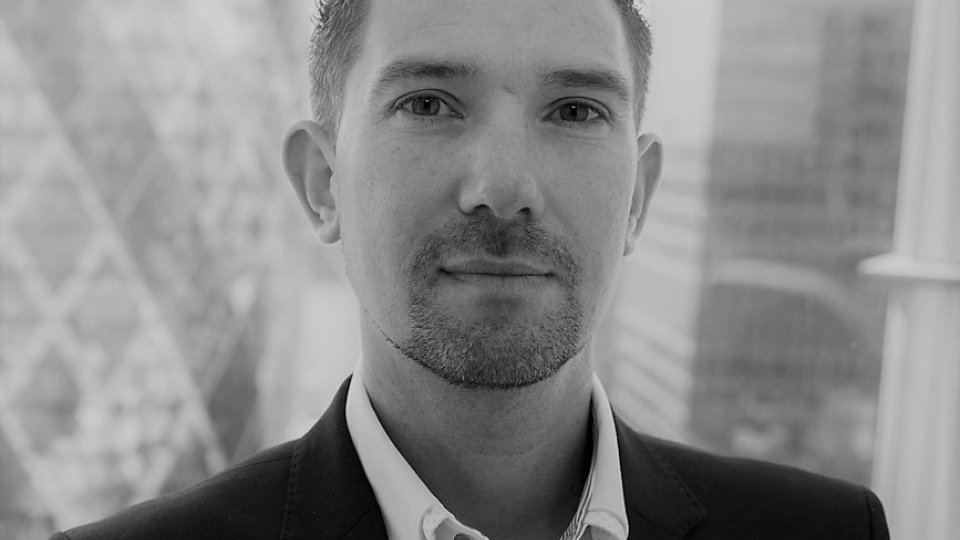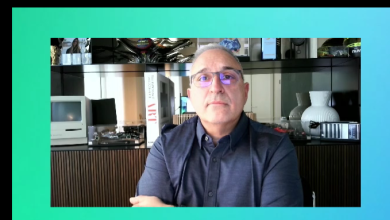
People have been laser-focused on the task at hand during the pandemic, but speaking with IT Europa Editor Carl Friedmann gave Rob Quickenden, chief technology officer at IT systems integrator and service provider Cisilion, a chance to reflect on how interesting the last 18 months have been, especially regarding the pace of change and events in his career that have provided a roadmap for success.
What do you see as required action to improve on the current MSP model?
Like everything, it’s going through a fast pace of change. In the past, much of what we and our long-term customers have done has been about maintenance: reactive, break fix, fix it and get it sorted, remediate. I think where that’s shifting at such velocity now is from reactionary to proactivity and then predictive. It’s about how we deliver the best possible customer service to do that we need to leverage more automation. We’ve put in place a series of initiatives and priorities where we’re adapting our MSP business to better support the needs of our customers as they continue their rapid adoption of cloud to accelerate their digital transformation journey. Outside of the technologies we support, it’s about that move from reactionary to predictive and preventative management, so automation is key. Today, we automate some things but not enough, so for us to grow, automated has to be number one. We have to deliver the best customer experience by fixing things before people know about them. Where we have started to do this already, the impact to our customers is huge.
So it’s problem prevention rather than problem solving.
Yes, that and the embedding of client success and adoption of change management into every engagement. Rather than just deploying and supporting technology, we’re focusing on helping our customers ensure their people know how to use the tools and products they have, and that technical teams know what they bought and how to support them. Most organisations that invest in services like Microsoft 365 use a fraction of what they have paid for as they don’t know it’s there – in the same way the average Office user uses tools like Outlook and Word the same way they always have and use very little of the new productivity saving features that have been developed over the years. From the user perspective, it’s how do we make sure they’re educated and delighted to use that tech. That enablement has become an important part of our managed services and is yielding great rewards, but the technology is always changing. Sometimes even when you deploy something it changes during deployment because the pace of change is so quick. So, continuing to drive that awareness, education and practical training mantra to our clients is key.
The other key pillar is security, which most of our customers still really struggle to get their heads round in this new hybrid world. IT gets firewalls and VPNs, but this is a tiny part of the attack service now. Most IT departments get very defensive about security and can find it a difficult conversation to have. Every organisation has vulnerabilities, yet everyone thinks they are secure until they get attacked. Remote work and the continued growth of phishing and ransomware attacks are driving demand across most organisations to have someone step in, advise, consult, and even take over or manage their security for them through a SOC service, for example. There’s lot of money being spent in security; it’s still the biggest budget item for CIOs and as such it’s crowded and competitive. The battleground now with all the vendors is who can acquire the most security products and convince customers to adopt their suite.
Considering the pace of change you mentioned and the need to adapt, how is futureproofing even possible?
The key thing is you have to get in the mindset that change is constant and it’s going to get faster. We’ve seen about 10 years of innovation in a year because Covid has forced organisations to change how they work to remain competitive and in business.
Many of our customers have had, and still have in some cases, empty offices for the best part of two years, but most say that productivity has been at an all-time high. We have certainly found that with two of our best years on record. It’s fuelled by the demand to move more things to the cloud, re-invent security for a hybrid environment and change the way customers think about where resources and data are stored, accessed and secured.
This has also driven a demand for new services around adoption and change management because change isn’t just about technology, but about the way people work and where they work. Many organisations have been forced to deploy new tools and technology like Teams or Zoom, for example, and most employees have been given laptops to allow them to work from home. The pace of change across the tools people use has also accelerated with monthly updates and changes to their apps.
Another thing that’s changing is access to people. While technical skills are still highly competitive, the talent pool is now far less “location centric”. Many of our customers are opening more virtual locations and recruiting people they’ve never seen face to face in locations nowhere near their physical offices.
In regard to futureproofing, for MSPs and next gen systems integrators, to remain competitive, you must keep your eyes open and accept that what you did pre-Covid is history and even what you do today may be out of date. You must continually review where you’re going and keep up with the pace of your customers and your competition. There are new services your customers need that go beyond installing stuff and fixing it if it goes wrong. To me, client success, training and change management become the centre of an MSPs managed service offering.
Everyone has a cloud-first strategy but in reality, what does that mean? I think it’s about agility. It’s the ability for a company to change what they do in the blink of an eye and understand the business you’re supporting rather than the technology.
So how do you get people to be more proactive about the assets they have?
It comes down to defining the service better. Is your service reactive or are you proactively monitoring their environment, advising them on what is going on and making strategic recommendations? Are you really an extension of their business or just a support and maintenance partner?
Where we’re spending our time and effort is not recruiting more technical people but investing in more client success managers and subject matter experts who know the tools and technologies organisations are using. This is to ensure our value to them is about helping people get the best out of them rather than providing just technical support.
This also helps customers simplify and consolidate what they have. We find many customers don’t know what they’ve really bought and many still pay for multiple products that do the same thing. If we can help them simplify and consolidate, that helps them. The fewer bits of tech you have, the easier it is to manage and the less it costs in support and maintenance too. That’s one of the biggest challenges we find ourselves helping organisations with right now.
Getting back to 10 years of innovation in a year, do you think raising the bar so high and so quickly is a good thing?
There are always people who wish there weren’t so many updates to their products released, but that’s the pace of our consumer lives now. In the on-premises world, you could walk into the office and it would almost be like stepping back in time compared to the technology used at home. What’s happened to the working world over the last 18 months is a culture shift in the way people work that no one has seen before. Cloud changes that as SaaS services are always up to date without the IT burden of having to run and manage complicated updates. This is good as everyone expects everything at once, but at the same time people want to respect the different ways people work and I think technology has a tremendous place in that. With innovation and the way people use technology, a lot of it comes back to that adoption of change. Sometimes the management of a project is 70% getting people to use and understand it properly and see the benefits of it. That challenge for an MSP is a very different skill set. So when you get that across, your customers love you for it.
It also goes to show that time is the most valuable commodity and learning a new working method can be intimidating even if it’s designed to be simpler and more efficient.
I think this is the biggest challenge we’ve faced as a company in our 22nd year in business. When you start an organisation, you work out what to do, what you’re good at and how to make things better. Most MSPs have had a relatively consistent and easy time over the years because there hasn’t been much change. Pre-Covid, cloud adoption had been steady but slow, but that’s changed massively, and people have had to re-evaluate what they’re good at and what customers want. A lot of organisations will pay for a managed service without really questioning what they get, and with the shift into cloud, the role of the MSP changes as it’s no longer just about installing some kit and supporting it. You also have the customer, us and the cloud vendor or multiple vendors, and that changes the dynamic of how you provide the support, security and lifecycle services. So I think our role as an MSP becomes a lot more relevant and important, but it’s not all our responsibility to do everything so being clear on “your value” is key. As an MSP, we become more of a broker, facilitator and driver of change and innovation, and I think it’s an exciting time as well as a new learning curve.
So how has being at Cisilion enabled a sense of fulfilment or a greater sense of purpose?
When the pandemic started, everyone was wondering what to do so we went into meeting overdrive. Some of that has settled, but as part of a leadership team, we came together in a way to build an ethos of trust, communication, empowerment and feedback. We meet more now informally than before, so I think we’re much more aligned with what other parts of the business are doing, and everyone realises they’re responsible for what they do rather than the manager leading down. One thing we saw during the pandemic was a lack of human interaction. Working remotely is great, of course, and people cracked on, and what that taught me is that the only person responsible for your career and your progression is you. So I’ve seen people become a little more selfish.
Is it more self-aware than selfish?
I think it’s a bit of both. It’s more what’s best for me and my customers instead of always seeking permission to do things. It’s really been an interesting transition. We are trusting everyone to be empowered, but also to take feedback. I’ve had more people ask me for feedback in the last year or so than ever before, and I think I’ve asked for feedback more as well. It’s an infectious thing. What I’m seeing personally and across the teams is feedback used to be through the ranks but now it’s done more one to one.
That cuts down on ambiguity as well.
Yes and it’s also in the moment. You used to get situations where there might be a negative experience and by the time it’s gone through all the channels, the people who were involved aren’t actually in the conversation. Now people are having those conversations directly because it’s more informal. It’s a really important trust factor in the way people work. If you can’t trust the people you work with and you can’t have an open conversation with them, it’s not going to work.
So does that encapsulate your approach to leadership?
We still have reporting lines and process and those things that need to be followed, but we’re in unchartered territories. You talk about technologies being updated quickly, and so have people’s lives. It’s also about how to be mindful about how they snap back. I think people have also become more empathetic. We’ve had more insight into people’s personal lives than we ever had before, and it’s important to management style and leadership. If you think about why customers buy from you as an organisation, you know that people buy for people, and when you miss that personal interaction, you’re not getting the full experience.
And it’s important to have that same mindset to build a cohesive team around you to maintain consistency. Despite the constant change we face, though, can you describe a distant reference point of inspiration that has sustained you?
I picked things up quite quickly in school and was the first person in my family to go to university but just before I left, I went to Nottingham and took a job doing IT support. My great uncle got me my first computer when I was about nine and I always knew I wanted to do IT, so I was in the field I wanted to be in but ideally, I wanted to be in advisory and consultancy. Back then I worked for a woman named Georgina, and she was horrible and I felt she really held me back. In the 90s, it was quite rare to have a woman working in IT management, and she was so protective and defensive about anybody doing a job similar to hers. She wouldn’t let me learn and locked books in the cupboard overnight so I couldn’t get to them. She really got in my way. So I was out one day with the owner and we went to see a customer and his car hit a deer and we sat by the side of the road for about three hours and I opened up about Georgina. He basically gave me a kick up the backside and said you just have to follow what you believe you want to do. So it goes back to the only person responsible for your progression is you. He got me to map out what I needed to do to get the job I wanted. What I’ve learned through that is that your choices in life are half chances, but you have to find the opportunities, so I think if you’re not passionate about what you do in your career, then you’re doing the wrong thing. I’m lucky to be mainly surrounded by people who are the same and that’s why I like being in a leadership position, to see other people succeed, grow and be the best they can be.


